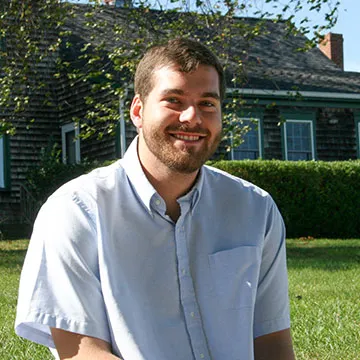The Math Detective

Think of him as a math detective.
Andrew Delsanto, along with his partner, is taking evidence from medical research and deploying advanced math equations and computer modeling to piece together how a well-known treatment for Parkinson’s disease works inside the brain. It is research that could lead to a new model of applying math to solve biomedical knowledge gaps. And he's getting to do it as an undergraduate at RWU, as a member of the Honors Program.
In his research, the Delsanto is tracking extracellular ions, while his partner - junior math major Kaia Lindberg - is running simulations that model the ion current flowing in and out of brain cells as a result of neurostimulation treatment – mild electrical pulses that patients barely feel. If they can demonstrate which ions – calcium, chloride, potassium and sodium – are the ones most affected by neurostimulation, Delsanto says it could one day lead to solutions for the biomedical industry to find new or more targeted, effective treatments.
“I’d love to see the research advance another 20 years and be able to say that as an undergraduate, I was part of something big.”
Their research may not lead to a cure for Parkinson’s disease tomorrow, but it may play a role in offering a new model of applying math to solve gaps in biomedical knowledge.
In the meantime, it’s exposing Andrew and Kaia to advanced math they wouldn’t typically see until graduate school and providing the opportunity to collaborate with faculty experts on innovative research.

